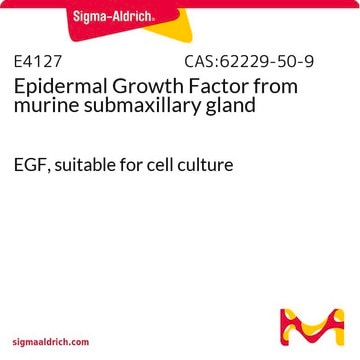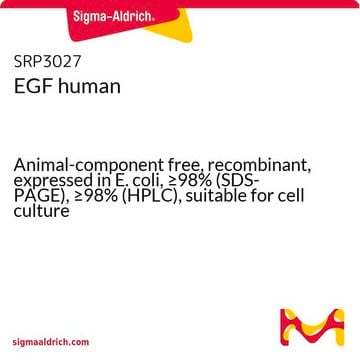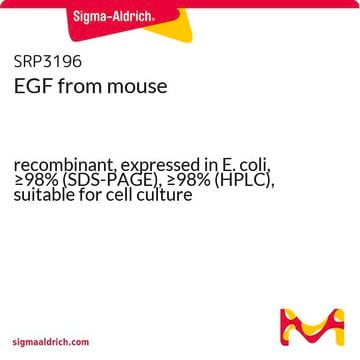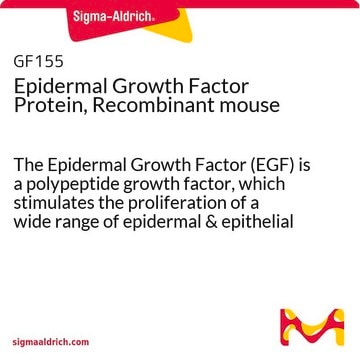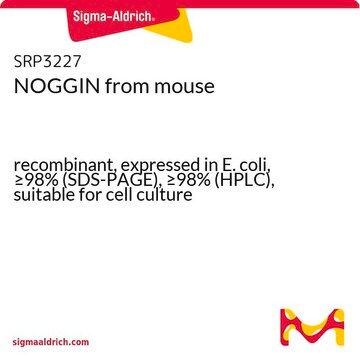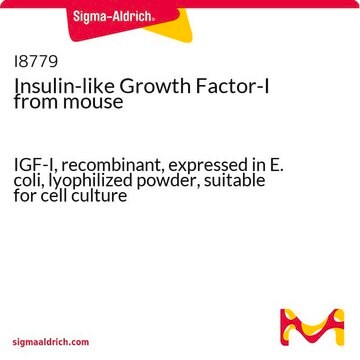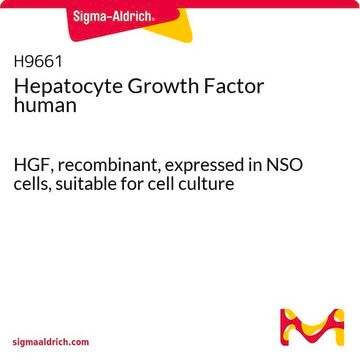E5160
Epidermal Growth Factor from mouse
≥90% (SDS-PAGE), recombinant, expressed in E. coli, lyophilized powder, suitable for cell cutlure
Sinônimo(s):
Mouse EGF, Mouse Epidermal Growth Factor
Selecione um tamanho
R$ 1.545,00
Selecione um tamanho
About This Item
R$ 1.545,00
Produtos recomendados
Nome do produto
Epidermal Growth Factor from mouse, EGF
fonte biológica
mouse
Nível de qualidade
recombinante
expressed in E. coli
Ensaio
≥90% (SDS-PAGE)
Formulário
lyophilized powder
potência
0.05-1 ng/mL ED50/EC50
peso molecular
~6 kDa
embalagem
pkg of 100 μg
condição de armazenamento
avoid repeated freeze/thaw cycles
técnica(s)
cell culture | mammalian: suitable
Impurezas
≤1 EU/μg endotoxin (Protein)
cor
white
solubilidade
water: soluble 0.10 mL, clear, colorless
nº de adesão UniProt
temperatura de armazenamento
−20°C
Informações sobre genes
mouse ... Egf(13645)
Descrição geral
Aplicação
Ações bioquímicas/fisiológicas
forma física
Código de classe de armazenamento
11 - Combustible Solids
Classe de risco de água (WGK)
WGK 1
Escolha uma das versões mais recentes:
Certificados de análise (COA)
Não está vendo a versão correta?
Se precisar de uma versão específica, você pode procurar um certificado específico pelo número do lote ou da remessa.
Já possui este produto?
Encontre a documentação dos produtos que você adquiriu recentemente na biblioteca de documentos.
Os clientes também visualizaram
Active Filters
Nossa equipe de cientistas tem experiência em todas as áreas de pesquisa, incluindo Life Sciences, ciência de materiais, síntese química, cromatografia, química analítica e muitas outras.
Entre em contato com a assistência técnica